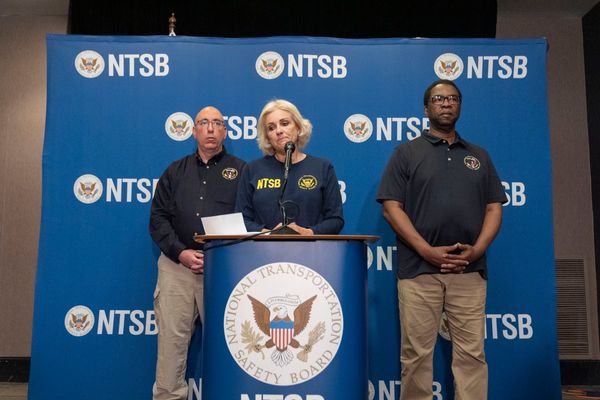One of Sony's strengths is that its PlayStation brand has always inspired fierce loyalty – which has been tested to the limit recently by the hacking of the PlayStation Network. But a measure of redemption could be at hand, in the form of the Next Generation Portable (NGP), the successor to its handheld PlayStation Portable console.
We were given the chance to get some hands-on time with the NGP, running a selection of Sony's in-house launch titles, and came away more impressed than we expected to be.
Known unknowns
Even though we've experienced it in the flesh, unfortunately there are a number of key things we still don't know about the NGP: the hands-on session took place in advance of the E3 show, where Sony is clearly aiming to make as big a splash as possible by making a big NGP reveal. That will include the following: it's actual name (NGP is just a place-holder), its price (although we do know it will be more than £200) and when it will hit the shops. But you won't have to wait long to find out.
In the flesh
The NGP had previously only been displayed in splendid isolation in the middle of a glass case, but a number of aspects made a big impression when we first got to hold one. First, it's surprisingly big, at least in terms of surface area (it's pretty slim). And the reason for that is pretty hard to miss: a 5in OLED touchscreen which, even by the high standards of previous variants of the PSP, is something to behold.
This is flanked, for the first time on a handheld console, by two analogue joysticks (usually, you would just find one on the left). In terms of its general look and feel, there's a PSP family resemblance, although it's more ovoid than its predecessors. It is also strikingly light, although we were only given access to pre-release development stations drawing their power from the mains rather than batteries. But Shuhei Yoshida, head of Sony's Worldwide Studios, confirmed: "Even with the battery in, it feels lighter than the PSP 3000."
Like Nintendo's 3DS, the NGP is rammed with features designed to let developers think outside of the box as far as control systems for games are concerned. It has a six-axis-style tilt sensor and a gyroscopic sensor, which responds to movement around a vertical axis. And much of the back of the unit is taken up by a touch-sensitive plastic pad – again, a first for a handheld console. Plus, it has two cameras, one on the front and one on the back.
NGP launch games
The games on show were all from Sony's in-house studios, so it remains too early to say how extensive third-party support will be for the NGP (although, given its attributes, and its processing and graphics grunt, we would be surprised if it's anything but extensive). But between them, the games on show managed to highlight its myriad capabilities.

By far the most exciting was Uncharted: Golden Abyss (above), a new episode in the Uncharted franchise, which takes place chronologically before Drake's Fortune (although Sony emphasised it isn't a prequel). Graphically, it lost little in comparison with the familiar PS3 Uncharted games, employing the same third-person viewpoint and richly detailed environments, as well as some great lighting effects.
One innovation for the NGP was use of the touchscreen – it lets you swipe across a path of hand-holds, for example, which Nathan Drake will then traverse, and when you walk over a weapon dropped by an enemy, you can get Nathan to pick it up by touching it. You can also use the tilt sensor to tell Nathan which direction to jump – or you can use the joysticks if you prefer.
WipEout 2048 looked similarly impressive: the huge screen's sheer number of pixels and sharp contrasts create the illusion of greater crispness than you would get from a TV. WipEout 2048 felt a bit more forgiving than its famously tough predecessors, and let you choose between three control systems, one of which used the tilt sensor for turning (the sensitivity of which was spot-on) and the rear touch pad to accelerate.
Little Deviants is a collection of 30-plus mini-games clearly designed to give each one of the NGP's features a thorough work-out. It included a variation on Whack-A-Mole in which you had to touch the front or back of the unit according to which direction Deviants revealed behind doors were facing, and a robot-shooting game which used the gyro-sensor for aiming, much like the 3DS's Face Raiders. Another mini-game used the rear touch pad to push up the terrain, allowing you to manipulate a ball-like Deviant around levels, avoiding enemies.
Sound Shapes is an intriguing 2D platformer which has music built into its gameplay: as you traverse levels, you collect objects that build up a soundtrack with, for example, pulsing lasers providing the beat. It also incorporates a LittleBigPlanet-style level editor which should prove popular. Reality Fighters, meanwhile, is an augmented reality beat-'em-up game, which lets you scan your face onto a fighter, then use your surroundings as a fight arena. Sony's in-house launch lineup is completed by a clutch of games familiar from the PlayStation Network, including Super Stardust Delta, Everybody's Golf and Hustle Kings.
Our verdict
We approached the NGP with scepticism – the once-exciting PSP seemed to become increasingly irrelevant with each iteration, culminating in the unmitigated disaster that was the PSPgo. But this new model restored our faith in Sony's ability to make handheld consoles.
It is sensibly designed – Yoshida admitted that with the PSPgo: "We made it our highest priority to make the unit small and portable, but that wasn't what people really wanted." And its peripheral bells and whistles – the cameras, motion sensors and touch-sensitive screen and rear pad – give developers just the ammunition they crave in their collective quest to unearth new forms of gaming.
Its screen is simply magnificent and for that reason alone, PSP users – with their penchant for watching TV and films on their machines – will be tempted to upgrade. And Sony will let PSP owners re-download games purchased via the PlayStation Network for free on their NGPs, which adds to the attraction of upgrading.
As long as its price doesn't creep too far above £200, it deserves to succeed. Yoshida admitted that the PSP suffered when Sony launched the PS3, claiming most of its development resources, but was adamant that: "Going forward, we do not want to make the same mistake". Keep your eye on our E3 coverage to discover what it will be called, when it will launch and how much it will cost.







